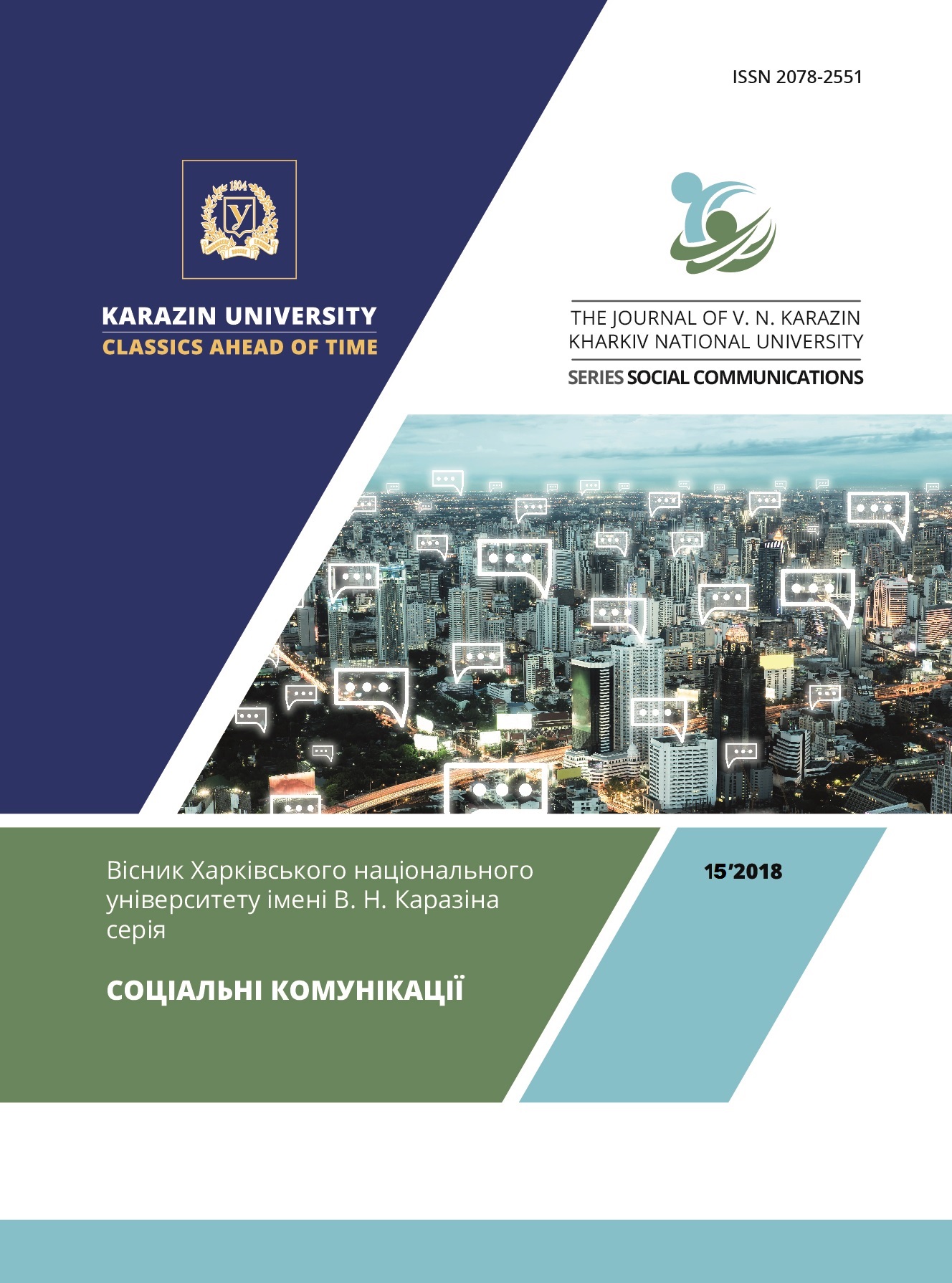Infotainment and showization: comparing of functions, main techniques and means
Abstract
Two basic trends in modern media – infotainment and showization are described. Today in journalistic articles, scientific and critical literature we can see an erroneous mixture of these two phenomena. The paper focuses on their significant differences; the functions of the techniques of high-quality infotainment and showization are delimited. Based on the merging of information and entertainment, infotainment has managed to penetrate all journalistic genres since its appearance in the USA in 1968. From that time not a single concept has proved to be as popular and successful. Infotainment techniques and means have completely changed the way information is presented. Detailing, personalization, shooting and editing effects etc. contributed to the ratings increase. At the same time world media critics were worried that the bright form of the message leads to the erasure of the codes and meanings that the author wanted to convey. A new serious problem of modern media is the advent of showization to replace infotainment. If the second concept is based on a fairly balanced combination of entertainment and information, that is form and content, then showization is aimed only at entertainment for entertainment and is implemented through the external shell of the message, while its internal content is distorted or completely absent. Sensationalism, entertainment, shocking come to the fore. All this weakens the control of the content, leads to a deception of audience expectations, a violation of the ethical standards of journalism and all kinds of manipulations. The paper presents a classification of content and structural innovations of infotainment (personalization, detailing, changes in using of «soundbite» and «no comment») and main techniques and means (infographics, linguistic techniques, experiments, shooting and editing effects, musical and noise designs). It is analyzed how their functions change when they become a tool of showization.
Downloads
References
Akopyan K. Z. Shlyagerizatsiya, shouizatsiya i eksgibitsionizatsiya v sovremennoy kulture. Gorizontyi kulturyi: ot massovoy do elitarnoy : Materialyi IX ezhegodnoy mezhdunarodnoy konferentsii, 16-17 noyabrya 2007 g. 2008. S. 15–21.
Bureiko A. I. Tabloidyzatsiia novyn na ukrainskomu telebachenni. Sotsialni komunikatsii. Zbirnyk naukovykh prats studentiv. DZ «LNU imeni Tarasa Shevchenka». 2013. T. 1. № 3. S. 18–23.
Burdina E. O. Infoteinment yak sotsiokomunikatyvne yavyshche v suchasnykh ukrainskykh informatsiino-publitsystychnykh teleproektakh: dys. na zdobuttia nauk. stupenia kand. nauk iz sots. Komunikatsii, 27.00.04 «Teoriia ta istoriia zhurnalistyky». Lviv, 2017. URL: https://www.lnu.edu.ua/wp-content/uploads/2017/09/dis_burdina.pdf.
Burdina E. O. Polisemichnist termina «infoteinment». Spheres of Culture. Liublin, 2016. Vyp. 14. S. 473–479.
Velykyi tlumachnyi slovnyk suchasnoi ukrainskoi movy (z dod. i dopov.) / uklad. i holov. red. V. T. Busel. Kyiv; Irpin: VTF «Perun», 2005. 1728 s.
Dovzhenko O. À la guerre comme à la guerre. Detektor media. 11.01.2011. URL: https://detector.media/withoutsection/article/59041/2011-01-11--la-guerre-comme-la-guerre/.
Dovzhenko O. Prohramy, yaki dumaiut, shcho vony analitychni. Detektor media. 9.01.2011. URL: https://ms.detector.media/manipulyatsii/post/10626/2011-01-09-programi-yaki-dumayut-shcho-voni-analitichni/.
Dolzhenkova I. Kakao-boby na vukha Yevropy. Detektor media. 25.09.2013. URL: https://detector.media/kritika/article/86149/2013-09-25-kakao-bobi-na-vukha-evropi/.
Infoteinment yak dzerkalo kirovohradskoi telerevoliutsii. Piat poverkhiv. 2011. URL: https://issuu.com/newseditor/docs/______________-_2.
Kosiuk O. M. Telebachennia yak henerator estetyko-komunikatsiinykh system. Masova komunikatsiia: istoriia, sohodennia, perspektyvy. 2016. № 9–10 (7). S. 73–77.
Kosiuk O. M. Khid konem abo deiaki mirkuvannia pro shouizatsiiu ukrainskykh ZMI. Novi shliakhy komunikatsii: daidzhest elektronnoho zhurnalu. Lviv, 2002. № 6–7. S. 19–20.
Romanenko Yu. M. Shouizatsiya. Proektivnyiy filosofskiy slovar: Novyie terminyi i ponyatiya. SPb.: Aleteyya, 2013. S. 469.
Suchasna politychna leksyka: entsyklopedychnyi slovnyk-dovidnyk / [I. Ia. Vdovychyn, L. Ya. Uhryn, H. V. Shypunov ta in.]; za nauk. red. Khomy N. M. Lviv, 2015. 396 s.
Holodenko O. Natalya Ligacheva: «Samaya opasnaya zavisimost segodnya dlya zhurnalista – eto zavisimost ot sobstvennyih ubezhdeniy». Detektor medIa. 20.12.2017. URL: https://detector.media/community/article/133264/2017-12-20-natalya-ligacheva-samaya-opasnaya-zavisimost-segodnya-dlya-zhurnalista-jeto-zavisimost-ot-sobstvennykh-ubezhdenii/.
Demers D. Dictionary of Mss Communication and Media Research: a Guide for Students, Scholars and Professionals. 2005. 358 p.
Otto L., Glogger I. & Boukes M. The Softening of Journalistic Political Communication: A Comprehensive Framework Model of Sensationalism, Soft News, Infotainment, and Tabloidization. Communication Theory. V. 27. I. 2. 2017. P. 136–155. URL: https://doi.org/10.1111/comt.12102




